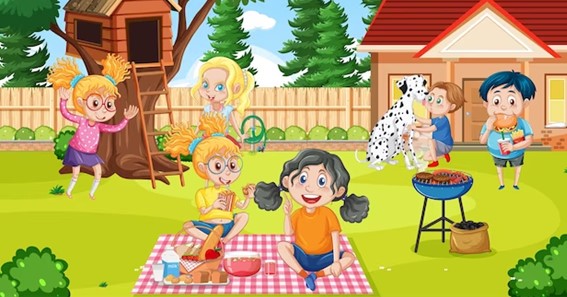Are you curious to know what is a picture composition? You have come to the right place as I am going to tell you everything about a picture composition in a very simple explanation. Without further discussion let’s begin to know what is a picture composition?
A picture is worth a thousand words, and in the realm of visual arts, composition plays a crucial role in conveying a compelling story or message. Picture composition refers to the arrangement and organization of elements within an image to create a visually pleasing and impactful composition. Whether you’re a photographer, artist, or simply a lover of visual aesthetics, understanding the principles of picture composition can enhance your ability to capture and communicate your vision effectively. In this blog post, we will explore the art of picture composition, its key elements, and how it can elevate your visual storytelling.
What Is A Picture Composition?
Picture composition involves making deliberate choices about how the various elements within an image are arranged. It encompasses the placement of subjects, the use of lines, shapes, colors, textures, and the overall balance and harmony within the frame. The goal is to guide the viewer’s eye and create a visually appealing and meaningful composition that conveys a specific mood, message, or narrative.
Key Elements Of Picture Composition:
- Subject: The subject is the focal point of your composition—the main element that grabs the viewer’s attention. It could be a person, object, landscape, or anything that you want to emphasize. Carefully consider the placement and size of your subject within the frame to create a visual hierarchy and draw the viewer’s eye.
- Rule of Thirds: The rule of thirds is a fundamental guideline in picture composition. It involves dividing the image into a grid of nine equal parts using two horizontal and two vertical lines. Placing key elements along these lines or at their intersections creates a more visually pleasing and balanced composition.
- Lines and Shapes: Lines can be used to guide the viewer’s gaze and create a sense of movement or direction within the frame. Horizontal lines suggest calmness and stability, vertical lines evoke strength and stability, while diagonal lines convey dynamism and energy. Similarly, the use of shapes, such as circles, triangles, or rectangles, can add structure and visual interest to the composition.
- Balance and Symmetry: Achieving balance in picture composition is crucial for creating visual harmony. Balance can be achieved through symmetrical or asymmetrical arrangements of elements. Symmetrical compositions create a sense of stability and formality, while asymmetrical compositions add a dynamic and engaging quality to the image.
- Depth and Perspective: Creating a sense of depth in your composition can add dimension and interest. Techniques such as leading lines, overlapping elements, and the use of foreground, middle ground, and background can help create a sense of depth and perspective, making the image more immersive and captivating.
- Colors and Contrast: The use of colors can evoke emotions and set the mood of your composition. Complementary colors can create visual impact and harmony, while contrasting colors can add drama and vibrancy. Additionally, playing with light and shadow, highlights and shadows, can add depth and dimension to the image.
- Negative Space: Negative space refers to the empty or blank areas surrounding the main subject in an image. Utilizing negative space effectively can enhance the visual impact, draw attention to the subject, and create a sense of simplicity or minimalism in the composition.
Conclusion:
Picture composition is an essential aspect of visual storytelling. By understanding and applying the principles of picture composition, you can create visually engaging and impactful images that effectively communicate your intended message or narrative. Whether you’re capturing photographs, painting, or creating digital art, mastering the art of picture composition allows you to harness the power of visual aesthetics to captivate and connect with your audience. So, grab your camera, brush, or design tools, and let your creativity soar as you explore the art of picture composition and unlock the potential to tell captivating visual stories.
FAQ
What Is Picture Composition And Example?
Definition: A picture composition consists of writing sentences based on a given picture. A writer will observe the picture, make a story out of it and express or elaborate on the thoughts and feelings they perceive from the picture.
What Is Picture Composition For Class 3?
What is Picture Composition? Pictures show us different characters and the various activities the characters engage in. The student is expected to describe these activities and the character’s surrounding portrayed in the picture.
What Is Picture Composition For Class 4?
What is a picture composition? Picture Composition is describing a picture. We can tell or describe the things we can see in the particular picture. We need to observe the picture and can make few sentences based on the picture.
What Is Picture Composition Class 7?
What is Picture Composition? Picture Composition, by and large, fosters the expertise of perception in understudies and improves their capacity to dissect a given picture and expound on it. Understudies get thoughts by noticing the image and they address their thoughts through all-around shaped sentences.
I Have Covered All The Following Queries And Topics In The Above Article
What Is Composition In A Picture
What Is A Picture Composition Definition
- What Is A Picture Composition
What is the purpose of picture composition
What is picture composition?
